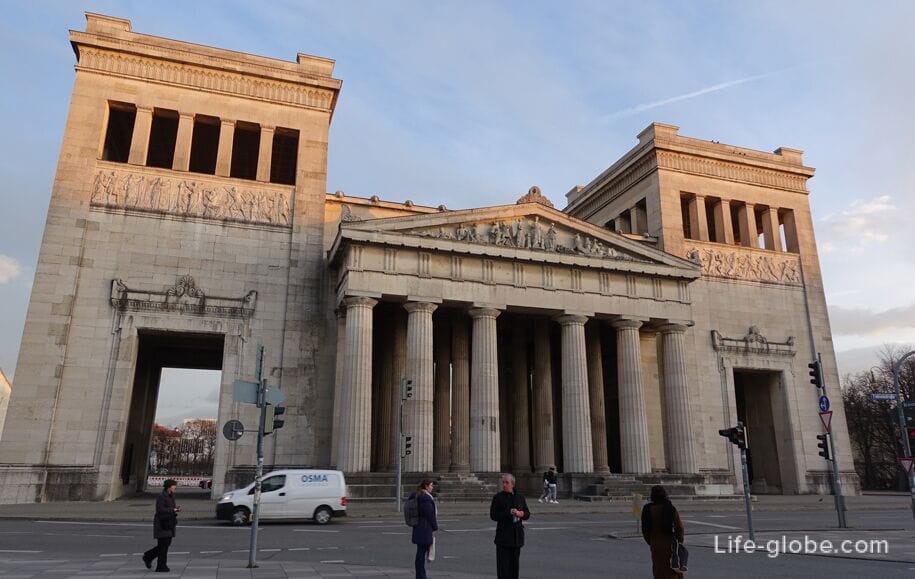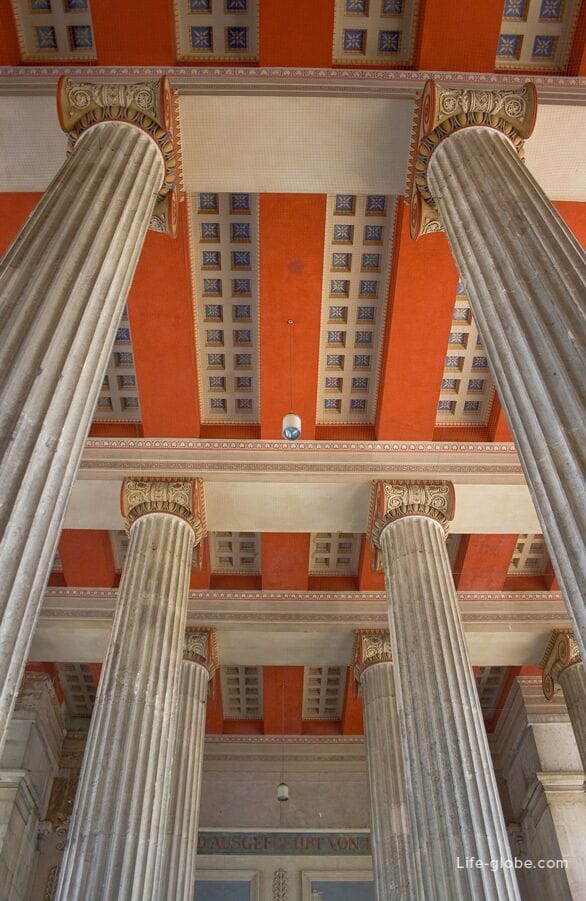
Propylaea (Propyläen) - a historical monument, which is a former gate (front passage), made in the Doric style and located in the center of Munich, on the west side of the Royal Square (Königsplatz).
The Propylaea or gates were erected by the German architect Leo von Klenze (Klenze, Leo von), on behalf of king Ludwig I in 1862.
After the erection of the Propylaea were the most representative and beautiful city gates in Munich, the capital of the new Kingdom of Bavaria.
The Propylaea is also called the "Temple gate" of Munich, because they are modelled on the Greek Propylaea of the Acropolis in Athens.
Munich Propylaea sawn in a purely classical style, with outer Doric columns, a portico with a triangular pediment and two towers. From 1862 to 1928 portals in the towers and the Central passage in the gate was passable. In 1928, the passages in the gates were closed to traffic and become pedestrian-only, and the highways were shifted slightly to the side.
The reliefs and sculptures of the gate is depicted, including scenes from the Greek war and the victory celebration.
View of the Propylaea from the East side

View of the Propylaea on the West side

The internal structure of the gate is remarkable ionic columns that support the roof of the Propylaea.

The history of the gate has 46 years old, and goes back to 1816, when Ludwig I, the Bavarian had planned to build the Propylaea. When in 1848 king Ludwig I had to abdicate the project of erecting the gate was put under doubt, one of the main reasons of which was connected with the fact that Munich has already grown far beyond the Royal square and at this stage of development, the city no longer needed the gates.
Finally, the Propylaea was built starting in 1854, and inaugurated in 1862 by the personal funds of Ludwig I, as a symbol of friendship between Greece and Bavaria, as well as a monument in the struggle for the freedom of Greece from 1821 to 1829, and as a monument to the son of Ludwig I, Otto I, Greek (the first king of Greece) of the Wittelsbach dynasty and the Bavarian army.
The Propylaea in Munich was built shortly before the fall of the Greco-Bavarian king Otto. In 1862 Greece was carried out the coup, an interim government was created and convened the National Assembly. King Otto was urged not to resist the king and the Queen voluntarily left Greece on a British warship and returned to Bavaria. Based on this event, we can say that the Propylaea were also a monument to a failed government in Greece, the Wittelsbach dynasty.
The Propylaea in Munich is located at the address: Louisenstrasse, 31 (Luisenstraße) / Royal area.